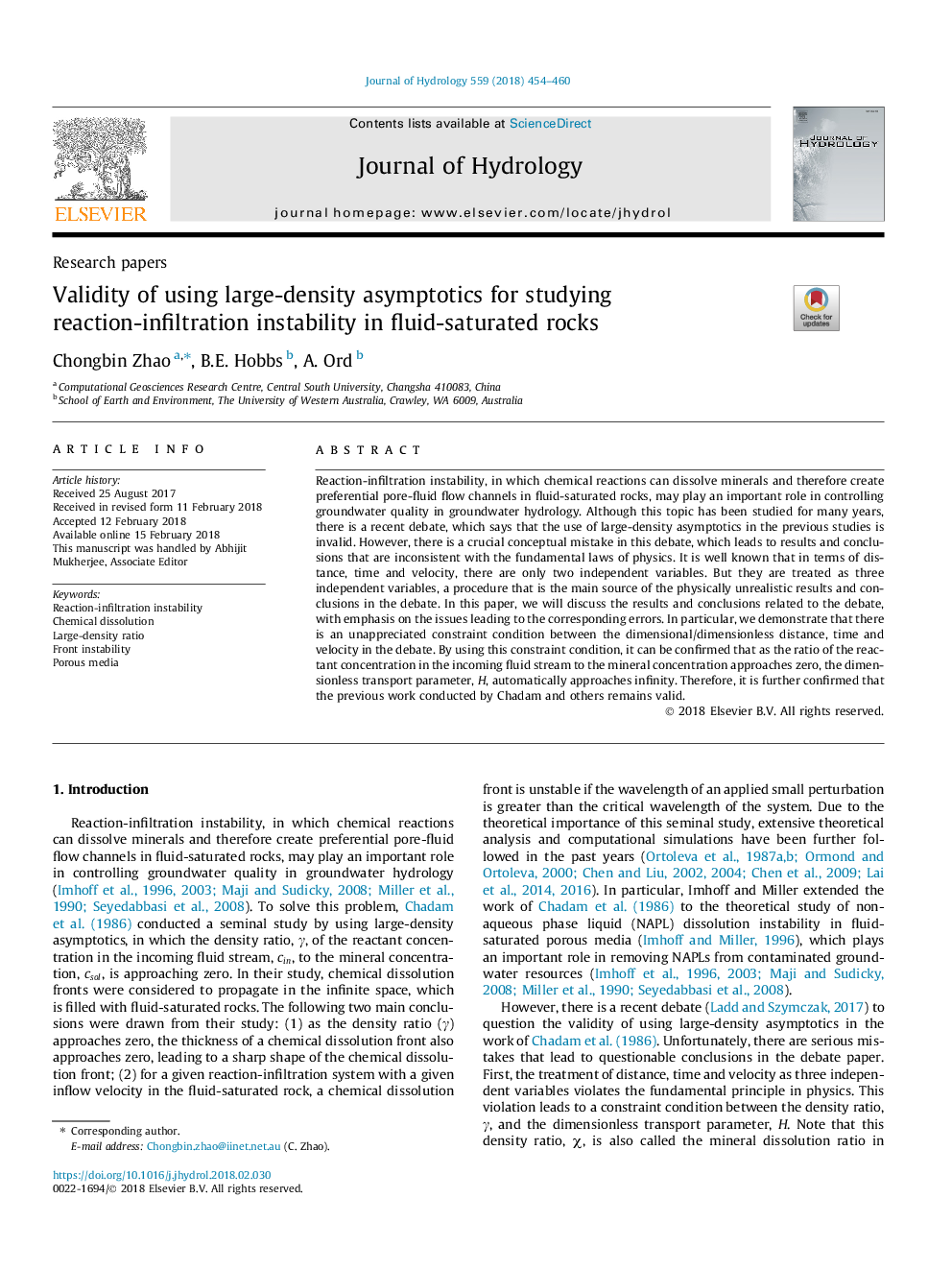| Article ID | Journal | Published Year | Pages | File Type |
|---|---|---|---|---|
| 8894906 | Journal of Hydrology | 2018 | 7 Pages |
Abstract
Reaction-infiltration instability, in which chemical reactions can dissolve minerals and therefore create preferential pore-fluid flow channels in fluid-saturated rocks, may play an important role in controlling groundwater quality in groundwater hydrology. Although this topic has been studied for many years, there is a recent debate, which says that the use of large-density asymptotics in the previous studies is invalid. However, there is a crucial conceptual mistake in this debate, which leads to results and conclusions that are inconsistent with the fundamental laws of physics. It is well known that in terms of distance, time and velocity, there are only two independent variables. But they are treated as three independent variables, a procedure that is the main source of the physically unrealistic results and conclusions in the debate. In this paper, we will discuss the results and conclusions related to the debate, with emphasis on the issues leading to the corresponding errors. In particular, we demonstrate that there is an unappreciated constraint condition between the dimensional/dimensionless distance, time and velocity in the debate. By using this constraint condition, it can be confirmed that as the ratio of the reactant concentration in the incoming fluid stream to the mineral concentration approaches zero, the dimensionless transport parameter, H, automatically approaches infinity. Therefore, it is further confirmed that the previous work conducted by Chadam and others remains valid.
Related Topics
Physical Sciences and Engineering
Earth and Planetary Sciences
Earth-Surface Processes
Authors
Chongbin Zhao, B.E. Hobbs, A. Ord,
